- Growing Lobelia Seedlings
- 1. Choosing the Right Seeds
- 2. Starting the Seeds
- 3. Providing the Ideal Growing Conditions
- 4. Transplanting the Seedlings
- 5. Light and Fertilization
- 6. Regular Maintenance and Care
- 7. Hardening Off and Planting Outdoors
- 8. Planting Outdoors
- Benefits of Lobelia Seedlings
- 1. Beautiful Blooms
- 2. Versatility
- 3. Low Maintenance
- 4. Attracts Beneficial Insects
- 5. Good Filler Plant
- 6. Easy to Propagate
- 7. Drought Tolerant
- 8. Long Blooming Season
- 9. Ground Cover
- Optimal Conditions for Lobelia Seedlings
- Light
- Temperature
- Watering
- Soil
- Fertilizer
- Transplanting
- Starting Lobelia Seedlings from Seeds
- Materials Needed:
- Step 1: Prepare the seed starting mix
- Step 2: Sow the lobelia seeds
- Step 3: Cover the seed trays or pots
- Step 4: Provide light and warmth
- Step 5: Water the seedlings
- Step 6: Transplant the seedlings
- Step 7: Harden off the seedlings
- Step 8: Plant the seedlings
- Step 9: Water and care for the seedlings
- Step 10: Enjoy your lobelia flowers!
- Caring for Lobelia Seedlings
- Watering and Fertilizing Lobelia Seedlings
- Watering
- Fertilizing
- Transplanting Lobelia Seedlings
- 1. Timing and Preparation
- 2. Watering
- 3. Removing the Seedlings
- 4. Transplanting into Containers
- 5. Transplanting into the Ground
- 6. Watering and Care
- Troubleshooting Lobelia Seedlings
- Common Issues with Lobelia Seedlings
- Preventing Issues with Lobelia Seedlings
- Conclusion
- Questions and Answers:
- What is the best time to grow lobelia seedlings?
- Should I start lobelia seedlings indoors or outdoors?
- What are some tips for starting lobelia seedlings indoors?
- How long does it take for lobelia seedlings to germinate?
- When can I transplant lobelia seedlings outdoors?
- Videos: Method of propagating Alocasia Amazonica from leaves
Growing lobelia seedlings can be a rewarding and enjoyable experience for any gardener. With the right care and attention, these delicate flowers can bloom into a stunning display of vibrant colors. Whether you’re an experienced gardener or just starting out, this complete guide will provide you with the knowledge and techniques needed to successfully grow lobelia seedlings in just a month.
One of the most effective ways to grow lobelia seedlings is through cutting seedlings. This method involves taking cuttings from an existing lobelia plant and rooting them to produce new plants. Cutting seedlings is a popular technique due to its quick results and ability to produce healthy and robust seedlings.
To begin the process of growing lobelia seedlings through cutting seedlings, start by selecting a healthy and well-established lobelia plant. Look for a plant that has strong stems and vibrant foliage, as this indicates a plant with a good root system.
Once you’ve selected the ideal plant, use a clean and sharp pair of scissors or garden shears to take a cutting. Choose a stem that is approximately 4-6 inches in length, ensuring that it has at least two sets of leaves.
It’s important to note that lobelia cuttings are best taken in the spring or early summer when the plant is actively growing. This will increase the chances of successful rooting and growth.
Growing Lobelia Seedlings
When it comes to growing lobelia seedlings, there are a few key factors to keep in mind in order to ensure successful growth. Whether you are starting from seeds or cuttings, here is a complete guide to help you grow healthy lobelia plants in just a month.
1. Choosing the Right Seeds
When selecting lobelia seeds, it is important to choose a variety that suits your specific needs and growing conditions. Lobelia plants come in various colors and sizes, so consider factors such as the amount of sunlight and space available.
2. Starting the Seeds
Start by sowing the lobelia seeds in a tray or pot filled with moist seed-starting mix. Lightly press the seeds into the soil with your finger or a small tool, ensuring they are not buried too deep.
3. Providing the Ideal Growing Conditions
Lobelia seedlings require a consistently moist environment to thrive. Water the seeds gently, ensuring the soil remains moist but not waterlogged. Place the tray or pot in a warm spot, ideally around 70 to 75 degrees Fahrenheit, for optimal germination.
4. Transplanting the Seedlings
After the lobelia seedlings have developed a few true leaves, they are ready to be transplanted into individual pots or containers. Fill each pot with well-draining potting soil and gently remove the seedling from the tray, taking care not to damage the delicate roots.
5. Light and Fertilization
Lobelia seedlings require bright, indirect light to grow properly. Place them near a window or use fluorescent grow lights to provide sufficient light. It is also important to fertilize the seedlings regularly with a balanced liquid fertilizer diluted according to the package instructions.
6. Regular Maintenance and Care
As the lobelia seedlings continue to grow, it is important to provide regular care and maintenance. This includes regular watering, ensuring the soil remains moist but not waterlogged, and removing any weeds or unwanted plants.
7. Hardening Off and Planting Outdoors
Prior to planting the lobelia seedlings outdoors, it is essential to harden them off. This involves gradually exposing the seedlings to outdoor conditions over a period of one to two weeks, starting with a few hours of outdoor time per day and gradually increasing the duration.
8. Planting Outdoors
Once the lobelia seedlings have been hardened off, they can be planted outdoors in a prepared garden bed or container. Ensure the soil is well-draining and amend it with organic matter if necessary. Plant the seedlings at the same depth as their previous containers and water thoroughly after planting.
Following these steps will help you grow robust and healthy lobelia seedlings in just a month. Enjoy the vibrant colors and delicate flowers of these stunning plants in your garden or containers!
Benefits of Lobelia Seedlings
Lobelia seedlings offer several benefits that make them a popular choice for gardeners. Whether you are new to gardening or an experienced horticulturist, here are some reasons why you should consider growing lobelia seedlings:
1. Beautiful Blooms
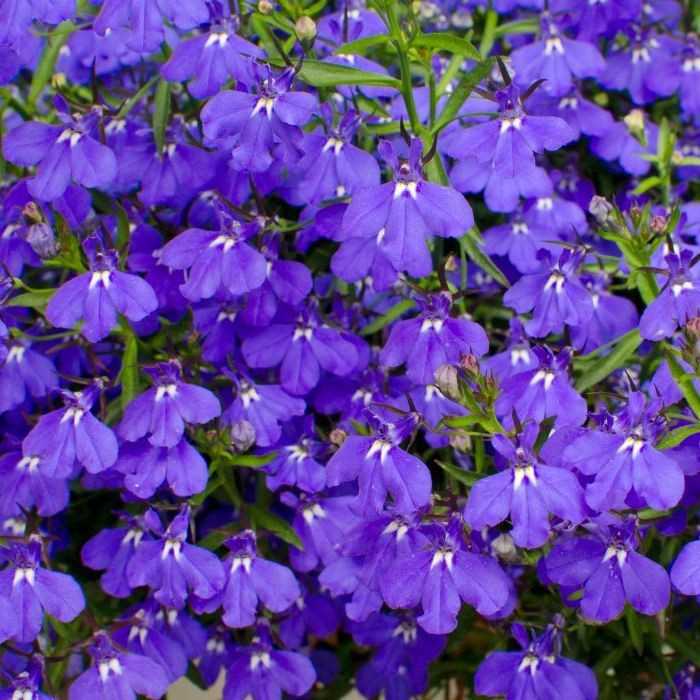
Lobelia seedlings produce beautiful flowers in various colors, including blue, purple, white, and pink. Their small, delicate flowers add a burst of color to any garden or floral arrangement.
2. Versatility
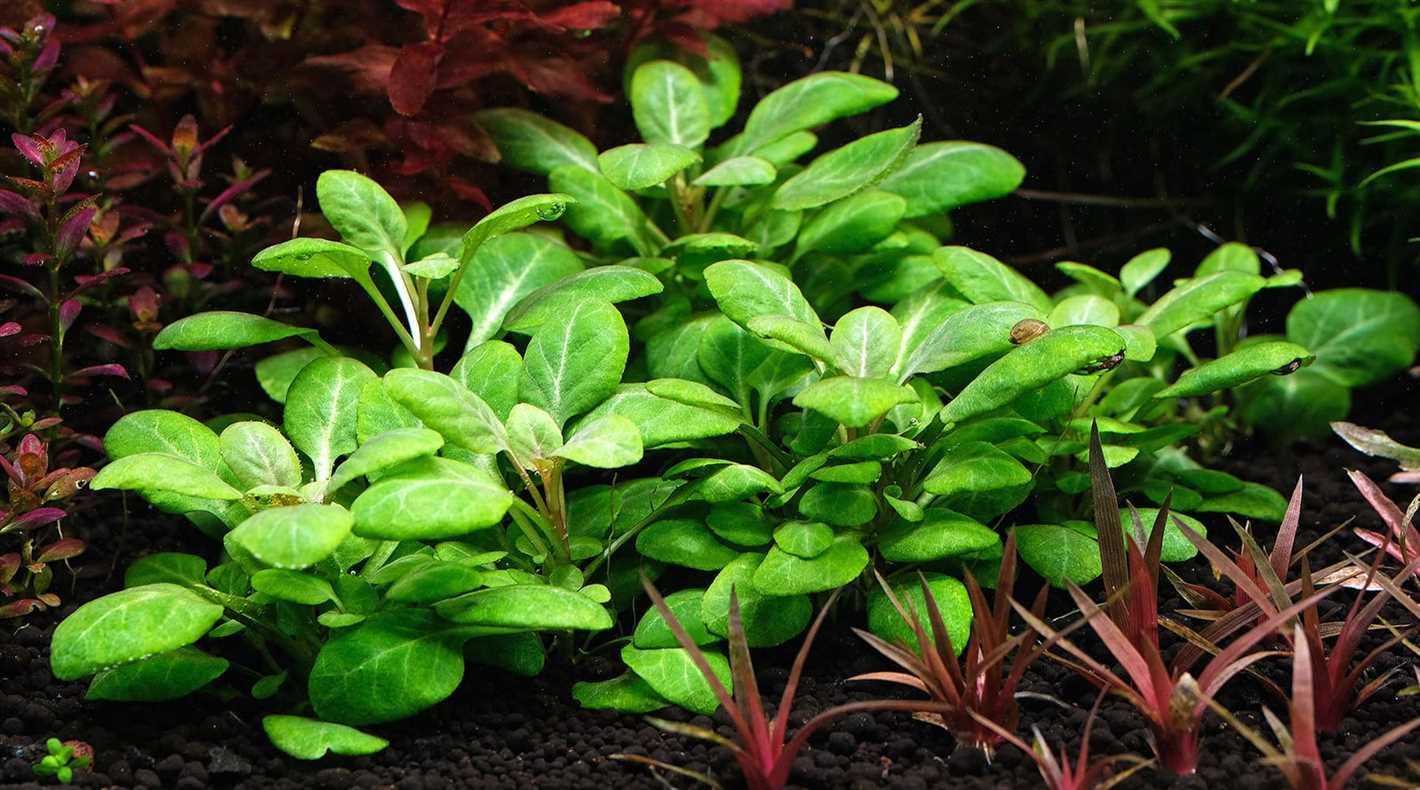
Lobelia seedlings are versatile plants that can be grown in various settings. They are commonly used in borders, beds, containers, hanging baskets, and window boxes. Whether you have a large garden or a small balcony, lobelia seedlings can fit in perfectly.
3. Low Maintenance
One of the main benefits of lobelia seedlings is their low maintenance requirements. They are easy to grow and do not require extensive care. With regular watering and sunlight, lobelia seedlings can flourish without much effort.
4. Attracts Beneficial Insects
Lobelia seedlings are known to attract beneficial insects such as bees, butterflies, and hummingbirds. These insects help with pollination and can contribute to a thriving ecosystem in your garden.
5. Good Filler Plant
If you have empty spaces in your garden or gaps between taller plants, lobelia seedlings make excellent filler plants. Their compact size and beautiful blooms can fill in these spaces and create a visually appealing garden.
6. Easy to Propagate
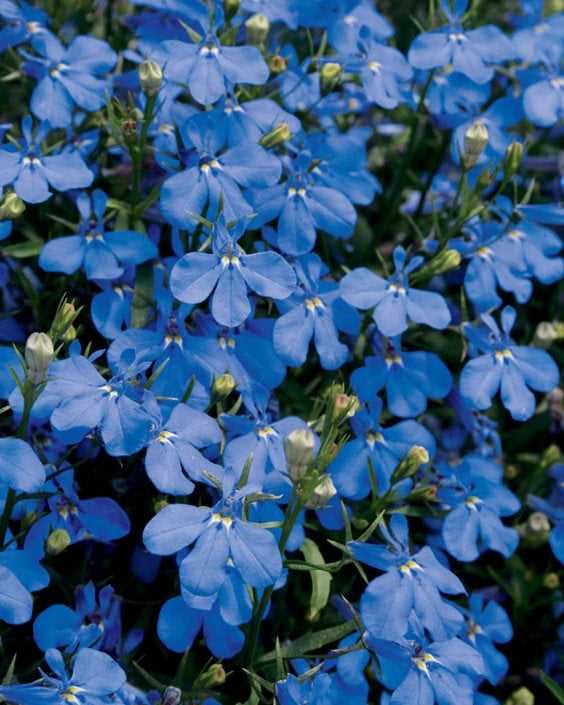
Propagating lobelia seedlings is relatively easy. You can collect seeds from mature plants or take cuttings to propagate new plants. This makes it cost-effective and convenient to grow lobelia seedlings year after year.
7. Drought Tolerant
Lobelia seedlings are drought-tolerant, meaning they can withstand periods of dryness without withering. This makes them a suitable choice for areas with limited water resources or for gardeners who may forget to water their plants occasionally.
8. Long Blooming Season
Lobelia seedlings have a long blooming season, often lasting from spring until fall. This extended flowering period ensures that you can enjoy their vibrant blooms for a significant part of the year.
9. Ground Cover
Some varieties of lobelia seedlings can be used as a ground cover due to their trailing habits. They can spread and create a lush carpet-like effect, adding texture and visual interest to the garden.
| Scientific Name | Lobelia erinus |
|---|---|
| Family | Campanulaceae |
| Native to | South Africa |
| Hardiness Zones | 2-11 (depending on the variety) |
| Sun Exposure | Full sun to part shade |
| Soil Type | Well-drained |
With their beautiful blooms, versatility, and low maintenance requirements, lobelia seedlings are a fantastic addition to any garden. Whether you want to add color to your containers or fill in empty spaces in your borders, lobelia seedlings can provide a stunning display of flowers throughout the growing season.
Optimal Conditions for Lobelia Seedlings
Growing lobelia seedlings successfully requires providing them with optimal conditions. Here are some important factors to consider when cultivating lobelia seedlings:
Light
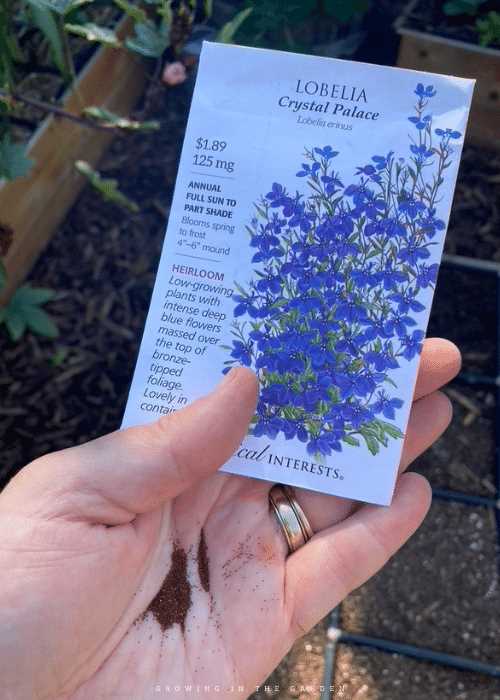
- Lobelia seedlings require bright, indirect sunlight to thrive.
- Place the seedlings in a location with at least 6 hours of sunlight per day.
- If growing indoors, use fluorescent grow lights to provide the necessary amount of light.
Temperature
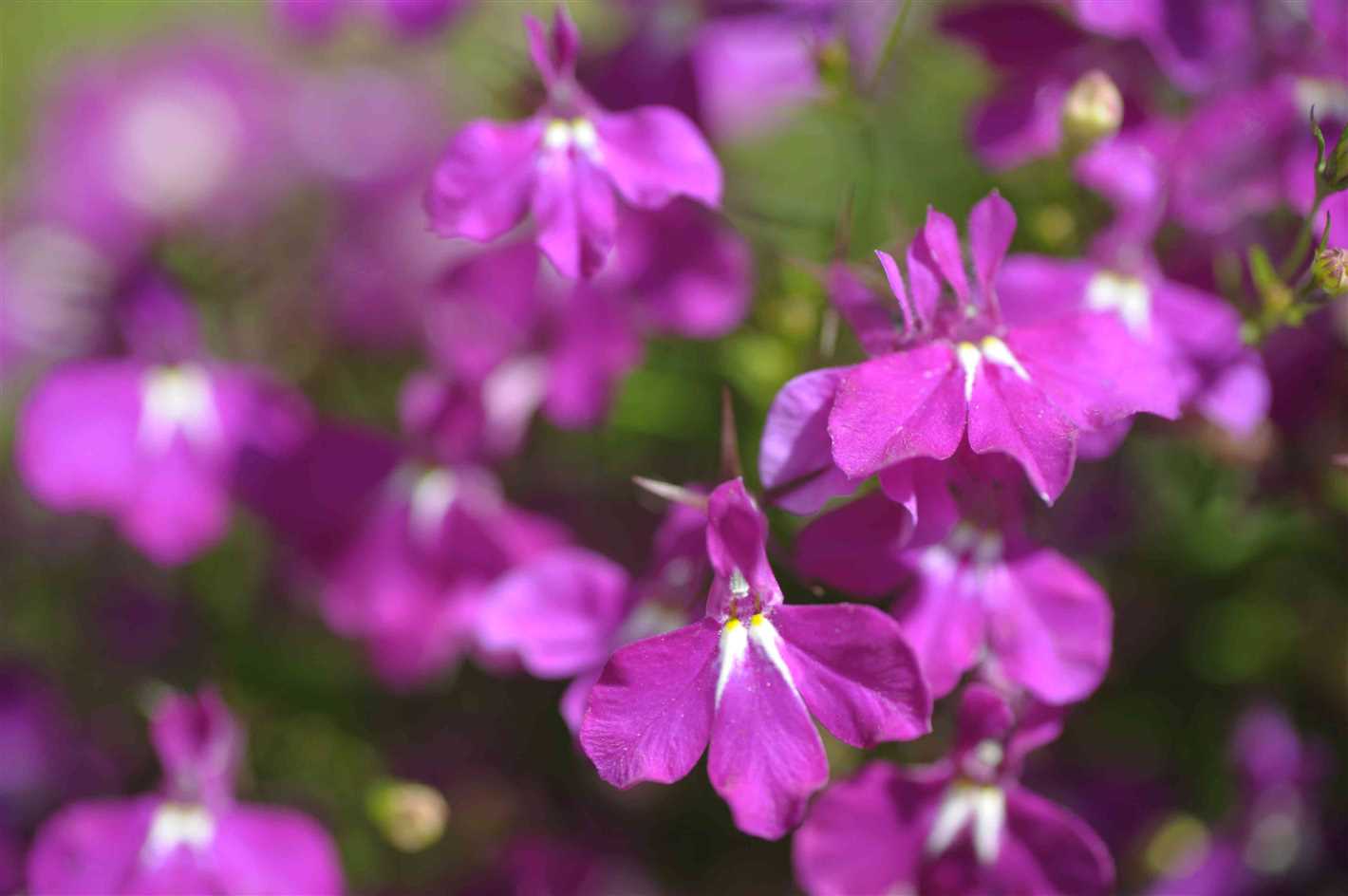
- The optimal temperature for lobelia seedlings is between 60 to 70 degrees Fahrenheit (15 to 21 degrees Celsius).
- Avoid extreme temperature fluctuations, as they can stress the seedlings.
- Keep the seedlings away from drafts or heat sources.
Watering
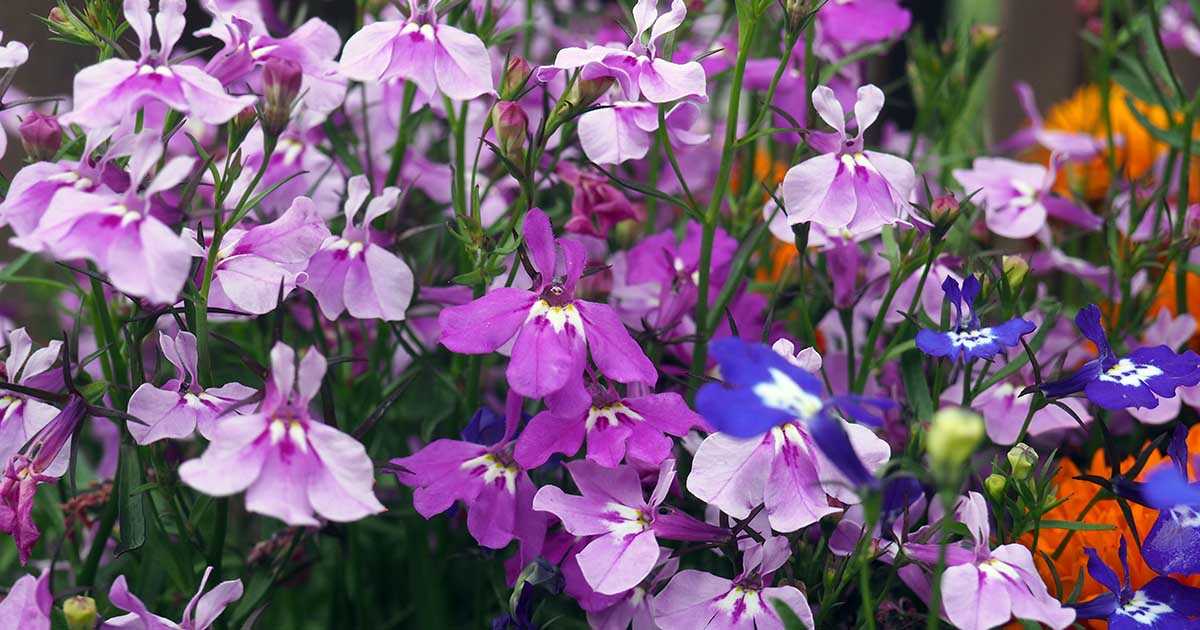
- Keep the soil consistently moist but not waterlogged.
- Avoid letting the soil dry out completely, as this can cause the seedlings to wilt.
- Water the seedlings from the base to prevent the foliage from getting wet, as damp foliage can lead to fungal diseases.
Soil
- Use a well-draining potting mix specifically formulated for seedlings.
- The soil pH should be slightly acidic to neutral, around 6.0 to 7.0.
- Ensure that the soil is rich in organic matter to provide the necessary nutrients for healthy growth.
Fertilizer
- Start fertilizing lobelia seedlings once they have developed their first true leaves.
- Use a balanced, water-soluble fertilizer diluted to half the recommended strength.
- Apply the fertilizer every two weeks to provide the seedlings with essential nutrients.
Transplanting
- Transplant lobelia seedlings into larger pots or containers when they have grown enough to handle.
- Ensure that the new container has good drainage to prevent waterlogged roots.
- Handle the seedlings carefully to avoid damaging the delicate roots.
By providing the optimal conditions of light, temperature, watering, soil, fertilization, and transplanting, you can successfully grow lobelia seedlings in just a month. Follow these guidelines to ensure healthy and vigorous growth of your lobelia seedlings.
Starting Lobelia Seedlings from Seeds
Lobelia is a beautiful flowering plant that can be easily grown from seeds. Starting lobelia seedlings from seeds is a cost-effective way to add color and beauty to your garden. Here is a step-by-step guide on how to start lobelia seedlings from seeds.
Materials Needed:
- Lobelia seeds
- Seed starting mix
- Seed trays or pots
- Plastic wrap or a plastic dome
- Grow lights or a sunny windowsill
- Watering can
Step 1: Prepare the seed starting mix
Fill the seed trays or pots with a good quality seed starting mix. Moisten the mix with water until it is evenly damp, but not soggy.
Step 2: Sow the lobelia seeds
Place the lobelia seeds on top of the moistened seed starting mix. Lightly press the seeds into the mix, but do not cover them. Lobelia seeds require light for germination.
Step 3: Cover the seed trays or pots
Cover the seed trays or pots with plastic wrap or a plastic dome to create a humid environment for the seeds. This will help to speed up germination.
Step 4: Provide light and warmth
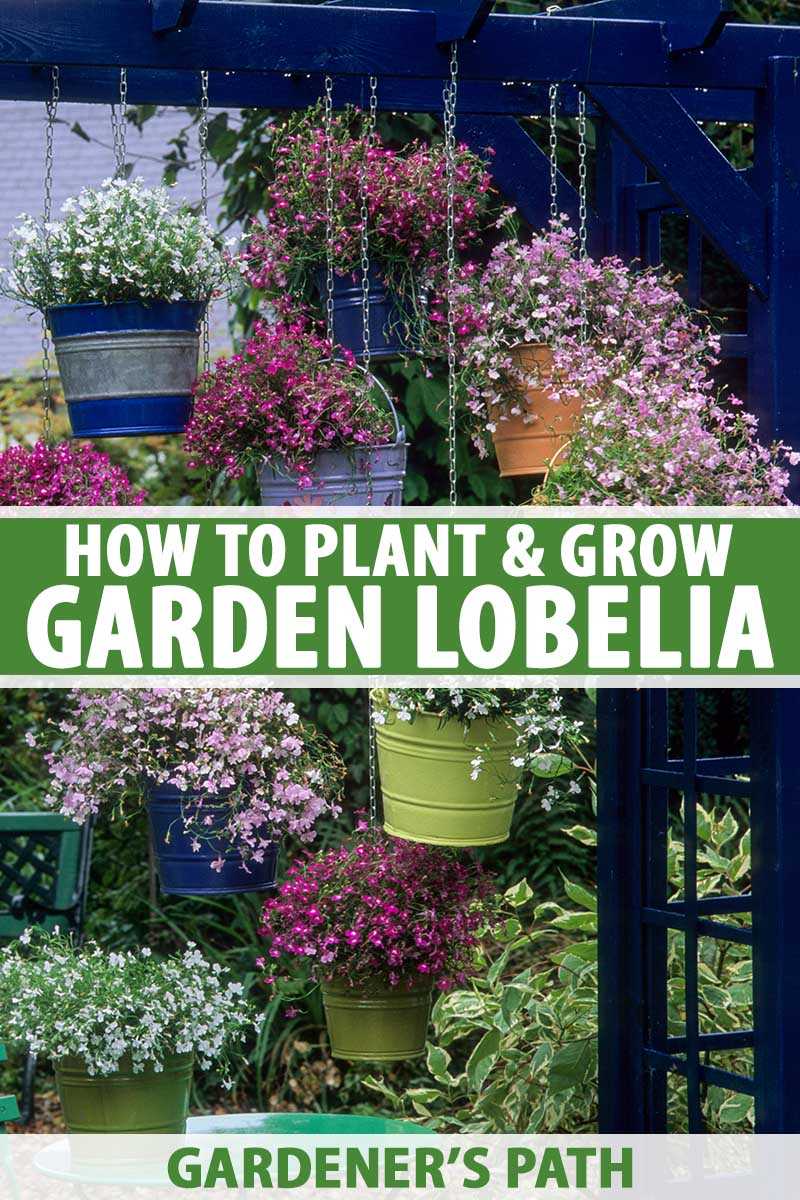
Place the seed trays or pots in a warm location with indirect sunlight. If you don’t have a sunny windowsill, you can use grow lights to provide the necessary light for germination.
Step 5: Water the seedlings
Keep the seed starting mix evenly moist, but not waterlogged. Use a watering can with a fine spray nozzle to water the seedlings gently.
Step 6: Transplant the seedlings
Once the seedlings have grown their first true leaves, which are the second set of leaves that appear after the cotyledons (seed leaves), they are ready to be transplanted into individual pots or containers.
Step 7: Harden off the seedlings
Before transplanting the seedlings into the garden, they need to be hardened off. This involves gradually exposing them to outdoor conditions, such as sunlight and wind, for a few hours each day. Start with a few hours of exposure and gradually increase the time over the course of a week.
Step 8: Plant the seedlings
Once the seedlings have been hardened off, they are ready to be planted in your garden. Choose a location that receives partial to full sun and has well-drained soil. Dig holes for the seedlings, plant them at the same depth as they were in the pots, and gently firm the soil around them.
Step 9: Water and care for the seedlings
Water the newly planted seedlings thoroughly and keep the soil evenly moist until they become established. Provide regular watering, especially during dry periods. Remove any weeds that compete with the seedlings for nutrients and space.
Step 10: Enjoy your lobelia flowers!

In about a month, your lobelia seedlings will start to bloom, adding beautiful splashes of color to your garden. Enjoy their delicate flowers and the joy they bring to your outdoor space!
Caring for Lobelia Seedlings
Once you have successfully grown lobelia seedlings, it is important to care for them properly to ensure their healthy growth. Here are some tips to help you care for your lobelia seedlings:
- Watering: Lobelia seedlings need regular watering to keep the soil moist. Water them gently and avoid overwatering as it can lead to root rot. It is a good idea to water them in the morning to allow any moisture on the foliage to dry out during the day.
- Fertilizing: Lobelia seedlings benefit from regular feeding to promote healthy growth and vibrant blooms. Use a balanced liquid fertilizer diluted according to the manufacturer’s instructions. Apply the fertilizer every two weeks or as needed.
- Light: Lobelia seedlings prefer bright, indirect light. Place them in a location where they can receive at least six hours of sunlight each day. If you are growing them indoors, consider using artificial grow lights to provide the necessary light intensity.
- Temperature: Lobelia seedlings thrive in cooler temperatures, ideally between 50-70°F (10-24°C). Avoid exposing them to extreme heat or cold as it can negatively affect their growth.
- Pinching: To encourage bushier growth, pinch the tips of the lobelia seedlings when they reach a height of 2-3 inches (5-7.5 cm). This will promote branching and result in more compact plants.
- Thinning: If the seedlings become too overcrowded, thin them out by removing weaker seedlings. This will allow the remaining seedlings to have more space and resources for healthy growth.
- Pests and Diseases: Keep an eye out for common pests like aphids and snails. If you notice any signs of pest infestation or disease, take appropriate measures to control them. Regularly inspect the seedlings for any signs of yellowing leaves, wilted foliage, or unusual growth patterns.
By following these care tips, you can ensure that your lobelia seedlings grow into healthy, vibrant plants that will enhance your garden or container displays. Remember to provide them with the necessary water, light, and nutrients, and keep an eye out for any potential issues that may arise.
Watering and Fertilizing Lobelia Seedlings
Proper watering and fertilization are essential for the healthy growth of lobelia seedlings. Here are some guidelines to help you keep your seedlings well-hydrated and nourished:
Watering
- Water the seedlings regularly to keep the soil moist, but not waterlogged. Lobelia prefers consistently moist soil.
- Check the soil moisture by sticking your finger into the soil up to the first knuckle. If it feels dry, it’s time to water.
- Avoid overwatering, as it can lead to root rot and other fungal diseases. Allow the top inch of soil to dry out slightly between waterings.
- Water the seedlings gently with a watering can or a hose attachment with a spray nozzle to avoid disturbing the delicate roots.
- If you’re growing lobelia in containers, ensure proper drainage by using pots with drainage holes and placing them on a tray or saucer to catch any excess water.
Fertilizing
- Start fertilizing the lobelia seedlings two weeks after they have germinated. Use a balanced, water-soluble fertilizer with a nitrogen-phosphorus-potassium (NPK) ratio of 20-20-20 or similar.
- Follow the instructions on the fertilizer packaging for dilution rates. Generally, you’ll need to mix the fertilizer with water according to the specified ratio.
- Apply the diluted fertilizer to the soil around the base of the seedlings. Avoid getting the fertilizer on the foliage, as it can cause burns.
- Fertilize the seedlings once every two weeks during the growing season. However, if the plants show signs of nutrient deficiencies, such as yellowing leaves, you may need to fertilize more frequently.
- Regularly monitor the plants for signs of fertilizer burn or overfertilization, such as stunted growth, wilting, or leaf scorching. If you notice these symptoms, reduce the frequency or strength of fertilization.
By providing proper watering and regular fertilization, you can ensure that your lobelia seedlings receive the necessary moisture and nutrients for healthy and vigorous growth.
Transplanting Lobelia Seedlings
Transplanting lobelia seedlings is an important step in their growth process. By moving them from their initial containers to larger pots or into the ground, you provide them with the space they need to develop strong roots and grow into healthy, vibrant plants. Here’s a step-by-step guide on how to transplant lobelia seedlings:
1. Timing and Preparation
It’s best to transplant lobelia seedlings when they have about four to six true leaves, usually about a month after germination. This gives the seedlings enough time to establish a robust root system. Before transplanting, prepare the planting area or containers by ensuring they are clean and have good drainage.
2. Watering
Before removing the seedlings from their original containers, water them thoroughly. This helps to loosen the soil and makes it easier to remove the plants without damaging their roots.
3. Removing the Seedlings
Gently tap the bottom of the seedling containers to loosen the roots. Carefully remove each seedling by holding the leaves, not the stems. Avoid pulling on the fragile stems, as they can break easily.
4. Transplanting into Containers
If you’re transplanting into containers, fill the new pots with a well-draining potting mix. Create a hole in the center and place the seedling, making sure it’s planted at the same depth as it was in the original container. Firmly press the soil around the seedling to eliminate air pockets.
5. Transplanting into the Ground
When transplanting lobelia seedlings into the ground, dig a hole that is slightly larger than the root ball of the seedling. Place the seedling into the hole and backfill with soil, ensuring that the crown of the plant is at ground level. Gently firm the soil around the base of the plant to provide support.
6. Watering and Care
Water the transplanted seedlings immediately after transplanting to help them settle into their new environment. Maintain a consistent watering schedule, keeping the soil evenly moist but not waterlogged. Provide the seedlings with bright, indirect light and protect them from harsh sun and strong winds for the first few days after transplanting.
By following these transplanting steps and providing proper care, your lobelia seedlings will continue to thrive and bring vibrant color to your garden or containers.
Troubleshooting Lobelia Seedlings
Common Issues with Lobelia Seedlings
Lobelia seedlings are generally easy to grow, but they can encounter a few common issues. Here are some troubleshooting tips for overcoming these problems:
- Yellowing leaves: If the leaves of your lobelia seedlings are turning yellow, it could be a sign of overwatering. Ensure that you are not keeping the soil too wet and allow it to dry slightly between waterings.
- Wilting: Wilting can be caused by underwatering or exposure to too much direct sunlight. Make sure that you are providing adequate water to your seedlings and protect them from intense sunlight, especially during the hottest hours of the day.
- Poor growth: If your lobelia seedlings are not growing well, it could be due to inadequate sunlight or nutrient deficiency. Ensure that your seedlings are receiving at least 6-8 hours of direct sunlight per day, or provide supplemental grow lights. Consider using a balanced fertilizer to provide essential nutrients for healthy growth.
- Disease or pests: Lobelia seedlings can be susceptible to damping off, a fungal disease that causes seedlings to rot at the base. To prevent damping off, use a well-draining soil mix, avoid overwatering, and provide good air circulation. If you notice signs of pests such as aphids or mealybugs, treat them with an appropriate insecticide or insecticidal soap.
Preventing Issues with Lobelia Seedlings
While it’s important to troubleshoot any issues that arise with your lobelia seedlings, it’s also helpful to know how to prevent these issues in the first place. Here are some preventive measures you can take:
- Choose healthy seeds: Start with high-quality seeds from a reputable source to ensure the best chance of success.
- Use sterile soil: Plant your lobelia seeds in sterilized potting soil to minimize the risk of disease or pests.
- Provide proper drainage: Make sure your seedlings are planted in containers with drainage holes to prevent waterlogged soil.
- Monitor moisture levels: Regularly check the moisture levels of the soil and water only when the top inch feels dry to the touch.
- Optimize sunlight exposure: Place your seedlings in a location that receives adequate sunlight or use artificial grow lights to provide the necessary light for healthy growth.
- Maintain good air circulation: Avoid overcrowding your seedlings and ensure good air circulation to prevent the development of fungal diseases.
- Practice proper sanitation: Clean and sterilize your gardening tools and containers to prevent the spread of disease.
- Monitor for pests: Regularly inspect your seedlings for signs of pests and take appropriate measures to control infestations.
Conclusion
Troubleshooting lobelia seedlings is relatively straightforward with the right knowledge and attention to detail. By implementing preventive measures and addressing common issues promptly, you can ensure the successful growth and development of your lobelia seedlings.
Questions and Answers:
What is the best time to grow lobelia seedlings?
The best time to grow lobelia seedlings is in late winter or early spring.
Should I start lobelia seedlings indoors or outdoors?
It is best to start lobelia seedlings indoors, as they need a controlled environment with constant temperature and humidity.
What are some tips for starting lobelia seedlings indoors?
Some tips for starting lobelia seedlings indoors include using a seed starting mix, keeping the soil moist but not soggy, providing a light source for at least 14-16 hours a day, and maintaining a temperature of around 70°F (21°C).
How long does it take for lobelia seedlings to germinate?
Lobelia seedlings typically take around 7-14 days to germinate.
When can I transplant lobelia seedlings outdoors?
Lobelia seedlings can be transplanted outdoors once the danger of frost has passed and the soil temperature is consistently above 60°F (15°C).







